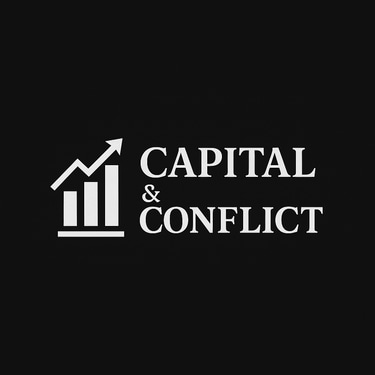The collapse of Assads regime: What It Means for Trade, Investment, and Regional Power
MACROECONOMIC
Michael Flattery
7/12/20252 min read


In December 2024, Syrian rebels captured Damascus, forcing Bashar al-Assad to flee to Russia and bringing an end to over 50 years of dynastic rule. Under the new leadership of Ahmed Al-Sharaa, Syria has begun its reintegration into the global political community — highlighted by high-level diplomatic engagements, including a recent meeting with former U.S. President Donald Trump.
Yet, deep instability remains. The bombing of Mar Elias church by ISIS and ongoing atrocities by various factions serve as stark reminders of Syria’s fragile security environment. Amid this volatility, one critical question emerges: what are the economic implications of the Assad regime’s collapse?
Current instability
The bombing of Mar Elias Church, claimed by ISIS, serves as a stark reminder that dangerous extremist groups remain active in Syria. This is compounded by an uprising in the coastal regions, which has led to sectarian massacres and widespread atrocities. Additionally, Israel’s military incursions in the south have further destabilized the country. Overall, Syria continues to be marked by deep and persistent instability.
Shift in regional powers
The collapse of Assad’s regime marks a significant shift in which regional powers will wield influence in Syria. Russia and Iran, longtime backers of Assad, have seen their power greatly diminished. Meanwhile, Turkey, instrumental in the regime’s fall—is positioned to become a major player, though this risks escalating tensions with Kurdish groups such as the Syrian Democratic Forces (SDF). Additionally, the future roles of Israel and the United States remain uncertain, given their historically hostile relations with Syria over the past five decades.
Economic Implications
Syria’s strategic location as a regional trade hub connects key routes to Lebanon, Turkey, Iraq, and the Mediterranean, making the potential reopening of its ports, borders, and trade corridors critical for reviving commerce. The easing or continuation of international sanctions will heavily influence trade volumes and the diversity of Syria’s trading partners. On the investment front, Syria faces enormous reconstruction needs, estimated in the billions of dollars, with sectors such as infrastructure, energy, telecommunications, and agriculture poised to attract foreign capital. However, investors must weigh significant risks, including ongoing political instability, weak governance, corruption, and the uncertainty surrounding sanctions. In financial markets, the Syrian pound’s future hinges on whether it can stabilize amid these challenges or continue to experience volatility. The banking sector’s reintegration into regional and global financial systems will be crucial, with regional banks, China-led initiatives, and Gulf funding expected to play important roles in Syria’s economic recovery.
Global Economic and Geopolitical Implications
Syria serves as a poignant case study of the risks and opportunities inherent in frontier markets, where political instability and strategic importance intersect. Global powers, including the United States, Russia, and China, continue to use Syria as a geopolitical lever to advance their regional influence and broader strategic goals. These dynamics have significant repercussions beyond Syria’s borders, notably affecting energy markets and supply chains. Control over key oil and gas routes through Syria influences regional energy security and global commodity flows, making the country a critical node in Middle Eastern geopolitics and international economic stability.
Conclusion
The collapse of Assad’s regime represents a historic turning point for Syria, opening the door to political reintegration and potential economic recovery. Yet, persistent instability, ongoing violence, and complex regional rivalries continue to cast a long shadow over the country’s future. Syria’s geographic and strategic importance ensures that its recovery will have ripple effects across regional power balances, trade routes, and global energy markets. While vast reconstruction needs and investment opportunities exist, significant risks remain for investors and policymakers alike. Ultimately, Syria’s path forward will depend on the delicate interplay between security, diplomacy, and economic reform — making it a crucial frontier market to watch in the coming years.
Insights
Exploring political risk and financial market impacts. This is not financial advice.
Analysis
Trends
© 2025. All rights reserved.
